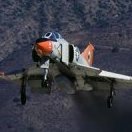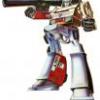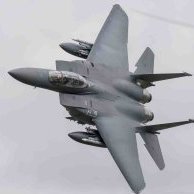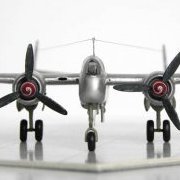Search the Community
Showing results for tags 'MiG-25'.
-
They 're rumours saying after its 1/48th MiG-25RBT "Foxbat-E", ICM is working on a MiG-25PD "Foxbat-A" kit in the same scale. Wishful thinking of more. Time will tell. Source: http://www.britmodeller.com/forums/index.php?/topic/234994939-icm-148-mig-25rbt/&do=findComment&comment=2573774 V.P.
-
Hi guys! A short introduction. My name is Alexander. I live in Ukraine and English is not my native language. Fortunately, there are “crutches” - Google Translate. But still, I may be inaccurate regarding termenology and model slang. So, you can correct me and give clarifications, this will improve my knowledge of English. Unless, of course, this forum thread will be of interest to anyone at all. And so I will build a kit from Condor 72016, Mig-25. This is a very old set, this plastic was sold in “Eastern Express”, “zvezda”, “IomKit” boxes, you can see all this on https://www.scalemates.com/ru/kits/condor-72016-mig-25pd--137575 As well as review of what's inside the box, for example on youtube. This kit is no longer relevant today. I cannot recommend this set to anyone. It is not very accurate geometrically, very low quality and poor detail. And I didn't plan to buy this kit. I got it as a prize at a scale model exhibition that took place in Mariupol in the autumn of 2021. And I tried to sell it, exchange it, or even just give it away. But in the end I decided to build it. Despite the fact that my box says Mig-25PD, and even added some parts, this set corresponds to the Mig-25P (Миг-25П) version. P(П) literally means "Interceptor". This is interesting because no one else has released this version. If you want to build the “P” version, it is much easier to conversed it from the ICM set, even though the ICM also has many shortcomings. The Mig-25 “red 31” flown Belenko, hijacked to Japan, was from version P. This modification was exported only to Libya. And I absolutely do not want to build anything with red stars. For this reason, I will build a Libyan Air Force aircraft.
- 52 replies
-
- 10
-

-
I'll get into this as soon as I have cleared the bench of a couple of builds. I don't have a Mig-25 or an Iraqi aircraft of any kind. So this fills a niche. I have heard this is a good kit and I am looking forward to it! Boxtop... ...and profile. See you all soon! --John
- 61 replies
-
- 1
-

-
- Mig-25
- Iraqi Air Force
-
(and 1 more)
Tagged with:
-
Hello guys and girls. I present you my latest finished model.The Iraqi Air force MiG-25rb in 72 scale made from the ICM kit. The kit has awesome details but the fit of the front and back fuselages is a bit tricky. This is my 4th ICM mig-25 and on every kit I had the same problem. Nothing that cant be sorted out but still .Added homemade seatbelts and pittotube. Painted with gunze acrylics. Regards,Dragan
-
Well it took a bit longer than anticipated but this cold-war Mig is finally done! It's ICMs 1/48 version of the Mig-25 PD with the challenge of a mostly monotone grey colour scheme. The main colour is MRP traffic Grey but I used a fair bit of artistic license when pre-shading with various other colours such as brown. Note no missiles or fuel tank in this shot. Eduard photo-etch was used to enhance the various aerials and intakes, along with a Master nose probe. Decals are by Begemot and went on fine. The base is made from mdf sprayed gloss black with a Soviet star added. The acrylic rods were bent into shape using a heat gun and 'gentle' persuasion. Although panels were mainly different shades of aluminium, I added random shades of metallic colours such as titanium to provide an interesting (in my eyes!) patina to the rear fuselage. The large fuel tank is detachable as it's held on by magnets. I used the kit missiles which were ok with a bit of work and added magnets so they can be added and removed easily. The pilot is an Aerobonus one which also came with a very nice seat though you can't see that much with the canopy closed! I used Alclad metals on the rear and weathered with brown washes. I went for blue lights from the exhaust just to add a bit of colour but best viewed in the dark! I lit the cockpit with a couple of red LEDs as I had no idea what they actually used and red seemed appropriate. I liked the ICM kit, it's well detailed and goes together nicely. It's certainly a big and imposing fighter! Thank you for looking!
- 19 replies
-
- 68
-

-

-
Happy New Year everyone! Hope you've managed to find time in the festive period to move a few projects on. Well its been a while since the F-15E but next up is another twin-tailed, twin-engined fighter but this time from the other side of the Berlin wall. The chosen subject is the ICM 1/48 Mig-25 PD Foxbat, which looks a nice kit, much more accurate and with finer detail than the old Revell offering and a better prospect for an in-flight display than the flawed KittyHawk version. One of the main reasons for choosing this particular aircraft was that it is a monotone grey scheme and I wanted to practise the use of black-basing to make the colour scheme more interesting. Plus I really like the rugged lines of the Foxbat and I'm using it as a technique trial before committing paint to a concurrent project of a 1/32 F-15B. The kits surface detail is very nice and crisp though the construction looks more complicated than usual. As usual, and nice though the kit is, I couldn't resist adding some extras which included: Eduard Big-Ed set Metallic Detail Exhausts (which are lovely but incredibly thin (and fragile!) Master Pitot Probe Aerobonus Mig-25 Pilot (as the kit doesn't come with one and it is in-flight!) As a starter I thought I'd add some of the PE detail as I need to get the intakes sorted early in the build. Some nice detail but the intake lips will need to be amended as they are in the down position which is fine for on the ground but not wheels up. Whilst the strips on the intake braces add some nice relief I found that they made the intake harder to fit and ended up removing half of them. The cockpit PE fits well though whether you'll see all this detail when the canopy is closed is another matter! I've drilled holes where the instruments are to allow then to be backlit. More eventually!
- 23 replies
-
- 10
-

-
This is the old ICM mould of the MiG-25PD.I added a resin cockpit and the rest is OOB.The model is painted with Tamiya and Gunze acrylics.The decals came from begemot. Regards,Dragan
- 13 replies
-
- 48
-

-
Howdy all, I have one of ICM's new Foxbats and a lovely kit it is, however I am baffled by the size of the compressor face at the end of the intake duct. It seems to be decidedly undersized and I wonder whether the XMM intakes correct this detail with a much larger compressor disk. Also, has anyone oredered from them before and what results? Cheers!
-
I recently got a hold of the Condor 1/72 MIG-25P and it's a very nice kit, one of the best MIG-25 kits in 1/72 I've read in various reviews, however Condor only gives the colour (In Russian) to be used on the aircraft with no paint makers referenced at all, As the main paints I use are Humbrol Enamels I thought I would show the colours that I intend to use on the model and if I'm making a mistake them someone can help me with using the right colours, this was after translating them from Russian All colours are Humbrol Enamel unless stated otherwise 1 Grey 166 2 Dark Grey 164 3 Black 33 4 Steel 27001 5 Ore-Brown 186 6 White 34 7 Light Blue 23 or Mr.Color 392 if the colour is for Cockpit Interior 8 Red 153 I'm thinking of using Mr.Color 391, which is a light green, which from the photo's of the cockpit interior of the MIG-25, seems better suited than the Light Blue. Any help gratefully received.
-
Good evening folks, today I want to present my latest finished kit. It's the fantastic ICM x Revell 1:48th scale kit of the Soviet Mikoyan-Gurevich MiG-25 RBT Foxbat-B reconnaissance plane. I'll keep this one short - I had an absolute blast during the build. At the first glance it looks rather complicated although the box doesn't contain that many parts but as ICM has a few different MiG-25's on offer, the modular construction of the fuselage makes sense but as mentioned it looks strange at first because it isn't the usual top and bottom half. But the whole thing goes together nicely and because the kit is cleverly engineered, the construction leads to fewer seams and edges which need cleaning and sanding. The only thing that was a bit problematic was the gear. At least on my kit it was a bit wobbly and only became stable after the Loctite super glue dried. Also on a lot of photos the MiG-25 RBT seems to be slanted a bit to the back, which isn't the case here, the main gear struts would need to be shortened for that. The rest is absolutely fine in my opinion. That said - I'm not counting rivets Apart from adding a lot and I really mean a lot of weight into the nose and some blackout curtains onto the canopy made from wax paper, the build was strictly OOB, painted with mostly Tamiya and Vallejo paints and weathered with AMMO panel line washes, oil paints and micro chipping done with other Vallejo paints. It was also the first time I used chipping fluid. In the end everything was sealed with semi gloss Tamiya varnish as usual. P.S. this thing is large! Hope you like it Till next time!
-
MiG-25PU Soviet Training Aircraft (72178) 1:72 ICM In the early part of the Cold War, the strategic bomber was seen as the obvious means by which to deliver a nuclear payload. The interceptor - large, heavy and fast - was seen as the equally obvious countermeasure. The MiG-25 Foxbat was, in many ways, the ultimate embodiment of this technology. It wasn't particularly groundbreaking and nor was it particularly sophisticated, but it was capable of incredible speed and could carry four large missiles to high altitudes very quickly indeed. The MiG-25's shortcomings as a combat aircraft were largely addressed through the MiG-31 Foxhound, but the type continued as an effective mission platform in a variety of guises. The PU version being the twin seat trainer for the interceptor version of the Foxbat, though with no radar or armament it was purely a flight trainer. The Kit This kit is now the sixth iteration of ICM's new 1/72 MiG-25 family, following on from the other variants. Inside the robust top-opening box are eight frames of light grey plastic and two of clear plastic. The kit is almost identical to the previous iterations, but includes revised parts for the nose (The interceptor nose is also included but only for the pylons which are also on the sprue). The airframe is covered in crisp, recessed panel lines which look very good indeed, and the mouldings are crisp and clean. The instructions are an A4 stapled booklet which has been printed in colour and the decal sheet is clear and well printed. The overall impression is of a well-executed, modern kit which looks like it should be thoroughly enjoyable to build. Construction begins with the rear cockpit and nose gear bay. Some detail is moulded in place on the sidewalls of the cockpit, with extra parts provided to represent additional details. Before the main structure of the cockpit can be completed, however, you have to add the bulkhead that forms the front wall of the cockpit and the rear wall of the nose gear bay. The instructions have you installing the nose gear leg at this stage, but I can't see any logical reason as to why this can't be done at the end. This would, of course, save you from breaking the leg part way through the build. The cockpit itself is nicely detailed, with the ejector seat alone made up of no fewer than five parts. An instrument panel and control column completes this section. Once the forward fuselage halves have been joined together, the whole sub-assembly fits onto a spar that also holds the huge engine air intakes. I've noticed that kit manufacturers are moving increasingly toward this style of construction, where certain parts are provided for purely structural purposes instead of the older slot and tab style of construction. I guess the main advantage, other than strength, is that everything can be positioned at exactly the right angle - a helpful feature for kits that feature quit a complex breakdown of parts such as this one. Each engine intake is full-length, with engine compressor faces provided. What results is a complete forward section of the aircraft up to the wing roots, with the internal structure of the air intakes protruding from the rear. The lower face of the main fuselage can be joined to this structure once the main landing gear bays have been added. ICM suggest that you add the main landing gear legs at this stage. Again, I can't see any reason why they couldn't be fettled into place after the main construction has been completed. Once the lower face of the main fuselage is in place, another structural bulkhead can be added, after which the slab-sides of the fuselage, including the outer faces of the air intakes, can be added. The dustbin-like jet exhausts are added at this stage, and very nicely detailed they are too. Once in place, the upper face of the fuselage can be added. Some modellers have noticed that the central spine has a flattened profile instead of a rounded shape. This is true, but I imagine most modellers will choose to live with this flaw. All that remains now is to add the nosecone, flying surfaces and finishing details. Each vertical tail is split vertically, with a seperate rudder. The outer face is moulded with part of the rear fuselage in place, so presumably it will be impossible to fit these parts at the wrong angle. Somewhat surprisingly, the upper wings are not moulded in one part with the upper fuselage. Instead, they are split into separate port and starboard halves, with two separate flaperons and upper wing fences and fittings. The nosecone is simply split vertically and houses the front cockpit. This is made up and added in along with its rear bulkhead, Once closed up the completed nose section can be joined with the rest of the fuselage. The canopies are nice and clear and can be finished in either open or closed position. Even though the wing tip missile rails are present no armament was used, and plugs are provided for the underwing pylon spaces as well. Other than that, and a few aerials, lumps and bumps, the huge aircraft is now finished. Decals Four options are provided for on the decal sheet: MiG-25PU Russian Air Force, Ramenskovsky (Zhukovsky) (UUBW) Russia August 2005 MiG-25PU Russian Air Force, MSN N22036241 Russia August 2012 MiG-25PU Belarus Air Force, MSN 22037313 1983 MIG-25PU Libyan Air Force, Mitiga, Libya Dec 2006 The decals look nicely printed and a full set of stencils is included. Conclusion We've waited a while for a new, more more modern kit of the Foxbat in this scale, but the wait has been worth it. ICM's effort is excellent, with high quality mouldings and plenty of detail. Overall this is a well executed and carefully designed kit, while the trainer configuration is very appealing indeed. Highly recommended. Available in the UK from importers H G Hannants Ltd. Review sample courtesy of
-
ICM is to release in Q3 2020 a 1/72nd Mikoyan-Gurevich MiG-25RU "Foxbat-C" kit - ref. 72176 Source: https://www.hannants.co.uk/product/ICM72176 V.P.
-
MiG-25 BM Soviet Strike Aircraft (72175) 1:72 ICM In the early part of the Cold War, the strategic bomber was seen as the obvious means by which to deliver a nuclear payload. The interceptor - large, heavy and fast - was seen as the equally obvious countermeasure. The MiG-25 Foxbat was, in many ways, the ultimate embodiment of this technology. It wasn't particularly groundbreaking and nor was it particularly sophisticated, but it was capable of incredible speed and could carry four large missiles to high altitudes very quickly indeed. The MiG-25's shortcomings as a combat aircraft were largely addressed through the MiG-31 Foxhound, but the type continued as an effective mission platform in a variety of guises. The BM variant was dedicated to the Supression of Enemy Air Defence (SEAD) role, known in the US Airforce as the 'Wild Weasel' role. As such, it was fitted with anti-radar systems, jammers and could carry up to four KH-58 'Kilter' missiles. Forty examples were produced in total. I think this kit is the fourth iteration of ICM's new 1/72 MiG-25 family, following on from the RBT, RB and RBF variants. The model is pretty much a scaled down version of their 1:48 kit, which is a jolly good thing indeed. Inside the robust top-opening box are seven frames of light grey plastic and one of clear plastic. The kit is almost identical to the previous iterations, but includes revised parts for the nose and a couple of new frames that hold the KH-58 missiles. The airframe is covered in crisp, recessed panel lines which look very good indeed, and the mouldings are crisp and clean. The instructions are an A4 stapled booklet which has been printed in colour and the decal sheet is clear and well printed. The overall impression is of a well-executed, modern kit which looks like it should be thoroughly enjoyable to build. Construction begins with the cockpit and nose gear bay. Some detail is moulded in place on the sidewalls of the cockpit, with extra parts provided to represent additional details. Before the main structure of the cockpit can be completed, however, you have to add the bulkhead that forms the front wall of the cockpit and the rear wall of the nose gear bay. The instructions have you installing the nose gear leg at this stage, but I can't see any logical reason as to why this can't be done at the end. This would, of course, save you from breaking the leg part way through the build. The cockpit itself is nicely detailed, with the ejector seat alone made up of no fewer than five parts. An instrument panel and control column completes this section of the build. Once the forward fuselage halves have been joined together, the whole sub-assembly fits onto a spar that also holds the huge engine air intakes. I've noticed that kit manufacturers are moving increasingly toward this style of construction, where certain parts are provided for purely structural purposes instead of the older slot and tab style of construction. I guess the main advantage, other than strength, is that everything can be positioned at exactly the right angle - a helpful feature for kits that feature quit a complex breakdown of parts such as this one. Each engine intake is full-length, with engine compressor faces provided. What results is a complete forward section of the aircraft up to the wing roots, with the internal structure of the air intakes protruding from the rear. The lower face of the main fuselage can be joined to this structure once the main landing gear bays have been added. ICM suggest that you add the main landing gear legs at this stage. Again, I can't see any reason why they couldn't be fettled into place after the main construction has been completed. Once the lower face of the main fuselage is in place, another structural bulkhead can be added, after which the slab-sides of the fuselage, including the outer faces of the air intakes, can be added. The dustbin-like jet exhausts are added at this stage, and very nicely detailed they are too. Once in place, the upper face of the fuselage can be added. Some modellers have noticed that the central spine has a flattened profile instead of a rounded shape. This is true, but I imagine most modellers will choose to live with this flaw. All that remains now is to add the nosecone, flying surfaces and finishing details. Each vertical tail is split vertically, with a seperate rudder. The outer face is moulded with part of the rear fuselage in place, so presumably it will be impossible to fit these parts at the wrong angle. Somewhat surprisingly, the upper wings are not moulded in one part with the upper fuselage. Instead, they are split into separate port and starboard halves, with two seperate flaperons and upper wing fences and fittings for missile pylons below. The nosecone is simply split vertically. The canopy is nice and clear and can be finished in either open or closed position. Four KH-58s are provided, along with pylons. Other than that, and a few aerials, lumps and bumps, the huge aircraft is now finished. Three options are provided for on the decal sheet: MiG-25BM, 'White 37', Lipetsk Combat and Conversion Training Centre. This aircraft is finished in the brown/sand/green over blue scheme; MiG-25BM, 'White 43', Ahtubinsk Airfield, 1987; MiG-25BM, 'Red 81', VVS, 1984 The decals look nicely printed and a full set of stencils is included. Yes, I know that's not a MiG! Conclusion We've waited a while for a new, more more modern kit of the Foxbat in this scale, but the wait has been worth it. ICM's effort is excellent, with high quality mouldings and plenty of detail. Overall this is a well executed and carefully designed kit, while the SEAD configuration is very appealing indeed. Highly recommended. Review sample courtesy of
-

ICM 1/48 MiG-25PD Iraq Air Force 1991(Early)
Baldy posted a topic in Ready for Inspection - Aircraft
Here with my ICM 1/48 MiG-25PD finished as an Iraq Air Force aircraft from 96 Sqn based at Qadessiya Air Base (Al Asad). Some references quote this as the aircraft in which Lt Zuhair Dawood intercepted and shot down the VFA-81 F/A-18C flown by Lt Cdr Scott “Spike” Speicher, who was sadly killed, on the first night of “Desert Storm”, 17 January 1991. Whatever the truth, the model has been build for our club Desert Storm commemoration build. The ICM kit is pretty decent in my opinion with just a few oddities to overcome. The upper/lower wing joint on the underside does not follow any panel lines and I chose to fill and rescribe the area but tbh it is unlikely to be seen. The trickiest joint I found was on the rear fuselage where the large fuselage side panels c/w the fins attaches to the front fuselage - I couldn’t quite get a perfect fit here despite much fettling. This area is also partly natural metal on most MiG-25s too so it took some time to get an acceptable result. Although the kit cockpit is pretty good, I chose to use parts of the Eduard set designed for the kit, mainly to enhance the rather prominent open canopy. I did also add some scratch built bits to the open canopy to represent the canopy curtain and the area behind. I struggled to find a MiG cockpit green colour which matched the Eduard parts and in truth, the Eduard parts didn’t look too much like any of the pictures of Foxbat cockpits I could find so I wound up using Mr Paint MRP-001 “Russian Cockpit Turquoise” and painstakingly hand painted the eduard parts to match. I also used a Resin seat (Can’t remember whose). Other aftermarket parts used were a Master pitot and Reskit exhausts. The latter I had mixed feelings about. They certainly improve the detail around the rear end of the fuselage but the exhaust petals themselves look really quite rough. The kit missiles are OK but lack a little finesse. I started to try to thin the missile fins and tidy them up but ultimately bought PlusModel replacements. These I found really tricky to assemble and paint, especially the front fins which are extremely delicate so you pays your money and makes your choice. If I build another - it will be a recce bird with no missiles! I removed the moulded “Odd Rod” IFF aerials on the upper nose and scratchbuilt new ones, replaced the aerial on the upper nose and scratched the aerial on the aircraft spine which is missing from the kit altogether despite being shown on the boxtops! I could only find a few pictures of in-service Iraqi MiG-25s but all of the ones I could find, and the ones taken after the war, often looking in less than tip - top condition, all indicate that they were painted pretty much the same as all the other interceptor Foxbats - light grey. The grey did have a significant blue tint. Unable to obtain any Mr Paint “Traffic Grey” which is probably the right colour, I mixed my own using Mr Hobby H315 and H417. Reading previous builds here on Britmodeller and elsewhere, I found a number of interesting nuances of Iraqi Mig-25s of the era including the Chaff Flare dispensers on the wing fence, which in my case were scratch build using parts from quick boost MiG-23 units, the large RWR bulges on the cheeks of the intakes which are included in the kit, the larger and enhanced flag on the tail courtesy go Begemot decals and the odd looking placement of the wing national markings. All of this information was gleaned from numerous internet searches and books and with thanks in the main to Tom Cooper (Now banned) and Jabba. The kit decals looked oversimplified and of not quite the right colours to me so I substituted Begemot decals and made the serial up from various sources. I also used a large part of the excellent Begemot Mig-25 stencil set although in fact Iraqi Migs had all of the stencilling in English. One other thing I did do was to shorten the main undercarriage legs by about 4 mm to help give the characteristic nose up attitude when the aircraft was on the ground. Finally, I apologise for the quality of the photographs! I can take pictures of the real thing but I’m not so good at taking pictures of models I’m afraid! The pictures actually make the model look cleaner than it does in real life - maybe I will return ad enhance the weathering a little. Enough of my ramblings, here are some pictures. I hope you like. Cheers Malcolm -
New ICM Foxbat variant in 1/72nd announced - ref. 72177 - MiG-25PD "Foxbat-E" Sources: https://icm.com.ua/en/aviation/mig-25-pd-3/ https://www.facebook.com/story.php?story_fbid=1534837893375810&id=421205504739060 Box art V.P.
- 41 replies
-
- 11
-

-

-
Hello guys; This is my first model of this year: Mig-25 RBF 931 OGRAP Werneuchen AB, Germany 1991. This is a ICM 1/72 new mold. Excellent. No problems during the job. This aircraft number 38 red (serial number 02032317) had an unusual livery. This Foxbat-D had camouflage paint scheme composed of dark brown, sand and dark green on the upper surfaces and dark grey on the underside. I used Mr Hobby paints, photo etched interior by Eduard and pitot by Master Pl. Cheers!
- 32 replies
-
- 48
-

-
In the framework of the recent toy tradefair Mir Detstva 2017, held at Moscow, ICM is reported having announced a new tool 1/72nd Mikoyan-Gurevich MiG-25RB/RBT "Foxbat-B" kit for 2018. To be followed. Source AlexGRD: http://master194.com/forum/viewtopic.php?f=3&t=100171&sid=b7252e4ad3d849de8e26c4c009281a81 V.P.
-
In the recently released test shot pictures from the future 1/48th Kittyhawk Mikoyan-Gurevich MiG-25PD/PDS "Foxbat-E" - ref.KH80119 - there was also a two-seat Mikoyan-Gurevich MiG-25PU "Foxbat-C" test shot - ref.KH80136. Source: http://www.themodellingnews.com/2013/08/kittyhawks-48th-scale-foxbat1-seater.html V.P.
-
MiG-25 RBF Soviet Reconnaissance Plane 1:72 ICM In the early part of the Cold War, the strategic bomber was seen as the obvious means by which to deliver a nuclear payload. The interceptor - large, heavy and fast - was seen as the equally obvious countermeasure. The MiG-25 Foxbat was, in many ways, the ultimate embodiment of the latter. It wasn't particularly groundbreaking and nor was it particularly sophisticated, but it was capable of incredible speed and could carry four large missiles to high altitudes very quickly indeed. The MiG-25's shortcomings as a combat aircraft were largely addressed through the MiG-31 Foxhound, but the type achieved considerable longevity as a reconnaissance platform. The RBF was an ELINT variant, converted from the RBK but fitted with updated Shar-25 equipment in place of the old Kub-3K system. Despite the changes, it retained the NATO Foxbat D codename. This kit is the third iteration of ICM's new 1/72 MiG-25 family, following on from the RB and RBT variants. A fourth iteration, in the shape of the MiG-25BM SEAD version, is also planned. The model is pretty much a scaled down version of their 1:48 kit, which is a jolly good thing indeed. Inside the very sturdy top-opening box are seven frames of light grey plastic and one of clear plastic. The kit is almost identical to the previous version, but includes a different sprue for the revised parts for the nose. The airframe is covered in crisp, recessed panel lines which look very good indeed, and the mouldings are crisp and clean. The instructions are an A4 stapled booklet which has been printed in colour and the decal sheet is clear and well printed. The overall impression is of a well-executed, modern kit which looks like it should be thoroughly enjoyable to build. Construction begins with the cockpit and nose gear bay. Some detail is moulded in place on the sidewalls of the cockpit, with extra parts provided to represent additional details. Before the main structure of the cockpit can be completed, however, you have to add the bulkhead that forms the front wall of the cockpit and the rear wall of the nose gear bay. The instructions have you installing the nose gear leg at this stage, but I can't see any logical reason as to why this can't be done at the end. This would, of course, save you from breaking the leg part way through the build. The cockpit itself is nicely detailed, with the ejector seat alone made up of no fewer than five parts. An instrument panel and control column completes this section of the build. Once the forward fuselage halves have been joined together, the whole sub-assembly fits onto a spart that holds the huge engine air intakes. I've noticed that kit manufacturers are moving increasingly toward this style of construction, where certain parts are provided for purely structural purposes instead of the older slot and tab style of construction. I guess the main advantage, other than strength, is that everything can be positioned at exactly the right angle - a helpful feature for kits that feature quit a complex breakdown of parts, such as this one. Each engine intake is full-length, with engine compressor faces provided. What results is a complete forward section of the aircraft up to the wing roots, with the internal structure of the air intakes protruding from the rear. The lower face of the main fuselage can be joined to this structure once the main landing gear bays have been added. ICM suggest that you add the main landing gear legs at this stage. Again, I can't see any reason why they couldn't be fettled into place after the main construction has been completed. Once the lower face of the main fuselage is in place, another structural bulkhead can be added, after which the slab-sides of the fuselage, including the outer faces of the air intakes, can be added. The dustbin-like jet exhausts are added at this stage, and very nicely detailed they are too. Once in place, the upper face of the fuselage can be added. Some modellers have noticed that the central spine has a flattened profile instead of a rounded shape. This is true, but I imagine most modellers will choose to live with this minor flaw. All that remains now is to add the nosecone, flying surfaces and finishing details. Each vertical tail is split vertically, with a seperate rudder. The outer face is moulded with part of the rear fuselage in place, so presumably it will be impossible to fit these parts at the wrong angle. Somewhat surprisingly, the upper wings are not moulded in one part with the upper fuselage. Instead, they are split into separate port and starboard halves, with two seperate flaperons and upper wing fences and fittings for bomb shackles below. The nosecone is simply split vertically, with a separate part for the camera pack and clear parts for the camera lenses. The canopy is nice and clear and can be finished in either open or closed position. Other than that, and a few aerials, lumps and bumps, the huge aircraft is now finished. Three options are provided for on the decal sheet: MiG-25RBF, 47th GRAP, Shatalovo Air Base, Russia, August 2001. This aircraft is finished in a disruptive green/brown/tan scheme; MiG-25RBF, 931st OGRAP, Werneuchen Air Base, Germany, 1991. This aircraft is also finished in a green/tan/brown scheme; and MiG-25RBF, 47th GRAP, Shatalovo Air Base, Russia, 2001. This aircraft is finished in the more commonly seen overall grey scheme. The decals look nicely printed and a full set of stencils is included. Conclusion We've waited a while for a new, more more modern kit of the Foxbat in this scale. ICM's new effort is excellent, with high quality mouldings and plenty of the detail. The surface structures are fine and crisp. Overall this is a well executed and carefully designed kit which is very appealing indeed. Highly recommended. Review sample courtesy of
-
MiG-25 RBT Photo Etch and Masks for ICM Kit 1:72 Eduard Fans of Soviet military hardware appear to be living through a golden age at present. When I returned to the hobby almost 20 years ago, kits of Soviet subjects were far less common than they are now, and those that were available were almost all either old, inaccurate tools from the west, or limited runs kits of a 'challenging' nature from the east. These days we are far better served by a range of new, state-of-the-art tools from the likes of Eduard, ICM, Trumpeter and Zvezda to name but four. In most cases, Eduard have eagerly supported each new release with a set of photo etched details and masks. This month, ICM's new MiG-25RBT receives the Eduard treatment. MiG-25RBT In the usual Eduard style, this set comprises two frets of parts. The first fret contains pre-painted parts for detailing the cockpit and includes harnesses, cushions, pull handles and other details for the pilot's seat, as well as details for the instrument panels and side consoles. Also included are parts for the rudder pedals. Many of the parts require their plastic equivalent to be scraped away. The second fret is unpainted and contains parts for detailing the landing gear bays and landing gear itself, the canopy and various surface details, particularly relating to the reconnaissance equipment in the nose. Also included are details for the huge jet exhausts such as detailed afterburner flame holders. MiG-25RBT Zoom If you are more concerned about the cockpit than the rest of the airframe, then you can save some shekels by plumping for the Zoom set. If you do, the only other parts that you will be missing out on are some of the extra details for the canopy (although you still get the rear view mirrors, which in my view make a big difference. MiG-25RBT Masks This set provides pre-cut paint masks for the canopy and all of the wheels. If you've used Eduard's pre-cut masks before, you'll know that they are a real time saver. Conclusion These sets are a handy upgrade for the new ICM kit. Recommended. Review sample courtesy of
-
MiG-25 RB Soviet Reconnaissance Plane (72173) 1:72 ICM In the early part of the Cold War, the strategic bomber was seen as the obvious means by which to deliver a nuclear payload. The interceptor - large, heavy and fast - was seen as the equally obvious countermeasure. The MiG-25 Foxbat was, in many ways, the ultimate embodiment of this technology. It wasn't particularly groundbreaking and nor was it particularly sophisticated, but it was capable of incredible speed and could carry four large missiles to high altitudes very quickly indeed. The MiG-25's shortcomings as a combat aircraft were largely addressed through the MiG-31 Foxhound, but the type continued as an effective reconnaissance platform in a variety of guises. The RB was an updated version of the original R reconnaissance variant, fitted with updated reconnaissance equipment as well as a bomb computer and the ability to carry up to eight 500kg bombs. This kit is the second iteration of ICM's new 1/72 MiG-25 family, following on from the later RBT variant. The model is pretty much a scaled down version of their 1:48 kit, which is a jolly good thing indeed. Inside the very sturdy top-opening box are seven frames of light grey plastic and one of clear plastic. The kit is almost identical to the previous iteration, but includes two extra sprues for the bombs and revised parts for the nose. The airframe is covered in crisp, recessed panel lines which look very good indeed, and the mouldings are crisp and clean. The instructions are an A4 stapled booklet which has been printed in colour and the decal sheet is clear and well printed. The overall impression is of a well-executed, modern kit which looks like it should be thoroughly enjoyable to build. Construction begins with the cockpit and nose gear bay. Some detail is moulded in place on the sidewalls of the cockpit, with extra parts provided to represent additional details. Before the main structure of the cockpit can be completed, however, you have to add the bulkhead that forms the front wall of the cockpit and the rear wall of the nose gear bay. The instructions have you installing the nose gear leg at this stage, but I can't see any logical reason as to why this can't be done at the end. This would, of course, save you from breaking the leg part way through the build. The cockpit itself is nicely detailed, with the ejector seat alone made up of no fewer than five parts. An instrument panel and control column completes this section of the build. Once the forward fuselage halves have been joined together, the whole sub-assembly fits onto a spart that holds the huge engine air intakes. I've noticed that kit manufacturers are moving increasingly toward this style of construction, where certain parts are provided for purely structural purposes instead of the older slot and tab style of construction. I guess the main advantage, other than strength, is that everything can be positioned at exactly the right angle - a helpful feature for kits that feature quit a complex breakdown of parts, such as this one. Each engine intake is full-length, with engine compressor faces provided. What results is a complete forward section of the aircraft up to the wing roots, with the internal structure of the air intakes protruding from the rear. The lower face of the main fuselage can be joined to this structure once the main landing gear bays have been added. ICM suggest that you add the main landing gear legs at this stage. Again, I can't see any reason why they couldn't be fettled into place after the main construction has been completed. Once the lower face of the main fuselage is in place, another structural bulkhead can be added, after which the slab-sides of the fuselage, including the outer faces of the air intakes, can be added. The dustbin-like jet exhausts are added at this stage, and very nicely detailed they are too. Once in place, the upper face of the fuselage can be added. Some modellers have noticed that the central spine has a flattened profile instead of a rounded shape. This is true, but I imagine most modellers will choose to live with this flaw. All that remains now is to add the nosecone, flying surfaces and finishing details. Each vertical tail is split vertically, with a seperate rudder. The outer face is moulded with part of the rear fuselage in place, so presumably it will be impossible to fit these parts at the wrong angle. Somewhat surprisingly, the upper wings are not moulded in one part with the upper fuselage. Instead, they are split into separate port and starboard halves, with two seperate flaperons and upper wing fences and fittings for bomb shackles below. The nosecone is simply split vertically, with a separate part for the camera pack and clear parts for the camera lenses. The canopy is nice and clear and can be finished in either open or closed position. Eight 500kg bombs are provided, along with the low profile pylons. Two are carried under each wing, while four are carried in pairs along the fuselage centerline. Other than that, and a few aerials, lumps and bumps, the huge aircraft is now finished. Four options are provided for on the decal sheet: MiG-25RB, 154th Independent Air Detachment, Cairo-West, May 1974; MiG-25RB, Soviet Air Force, late 1970s; MiG-25RB, 63rd Independent Air Detachment, UAR, 1971-1972; and MiG-25RB (Late Production), Iraqi Air Force, 1980. The decals look nicely printed and a full set of stencils are included. Conclusion We've waited a while for a new, more more modern kit of the Foxbat in this scale. ICM's new effort is excellent, with high quality mouldings and plenty of the detail. The surface structures are fine and crisp. Overall this is a well executed and carefully designed kit which is very appealing indeed. Highly recommended. Review sample courtesy of
-
I'll try to do a double build! After lot of failures on the gb, this is my all in! MiG-25 RBT by ICM, i will build it OOB except for the Master probe ciao Ale
-
Here is my 1:144 Mikoyan-Gurevich MiG-25RU "Foxbat C" which I built back in 2006. It's a home-made conversion of the Academy/Minicraft kit of the "Foxbat A" into a two-seater "Foxbat C". The second canopy (the front one) came from a scrapped Revell MiG-25. Apart from obviously making the second cockpit, and actually making little cockpits (there is none in the kit), I had to reshape the nose and I was very pleased I got it right. Unfortunately, the Acad./Mini. canopy has the wrong shape being too tall and short. I tried to get it closer to shape by sanding it and polished it afterwards. The Revell canopy was more accurate just being a bit too low. Otherwise, I corrected the wing fences, the inner ones being completely replaced and the outer ones sanded lower. The wingtip pods were also reworked. Other details were also thinned, reworked or added. The kit was fully painted by brush with only varnish being applied by airbrush. The bort number came from my decal spares box with the stars were those of the kit itself. Thank you for looking. All comments are welcome. Miguel












